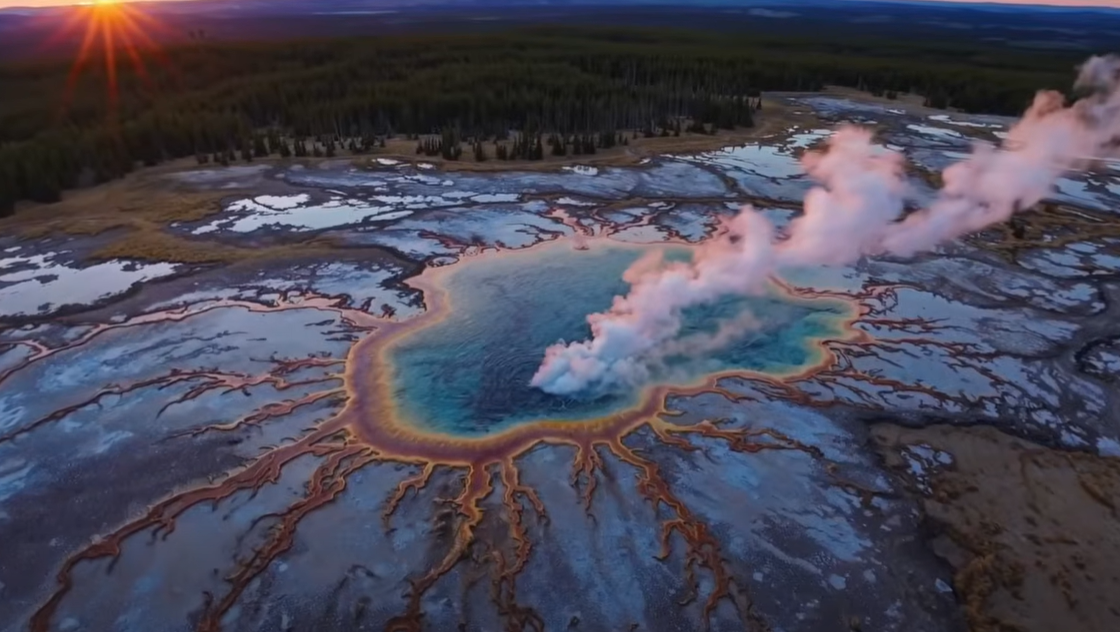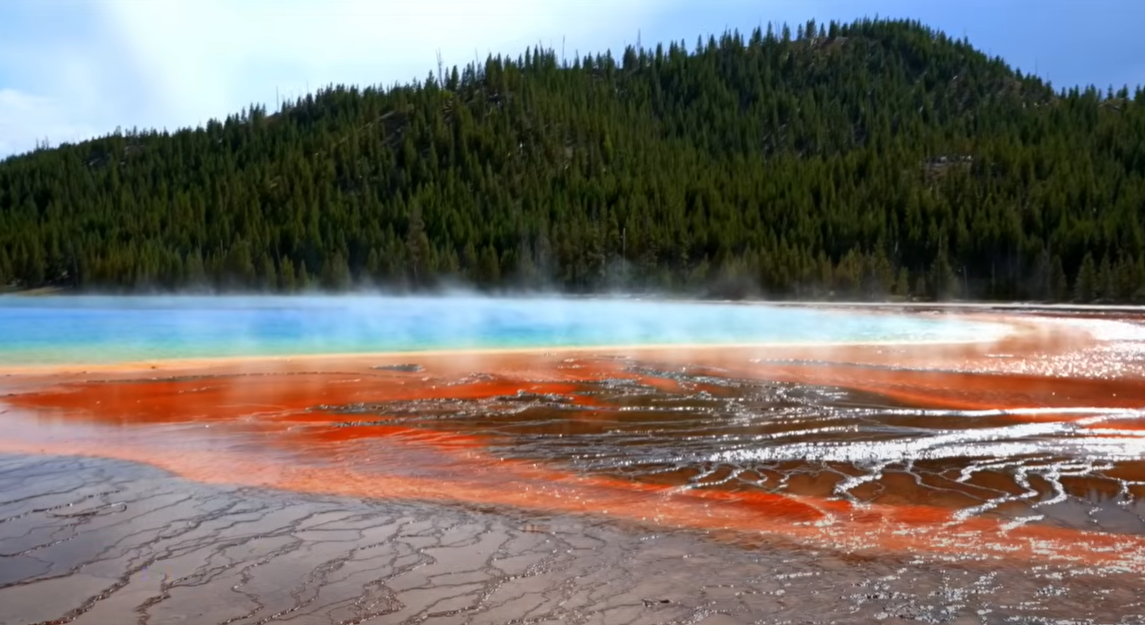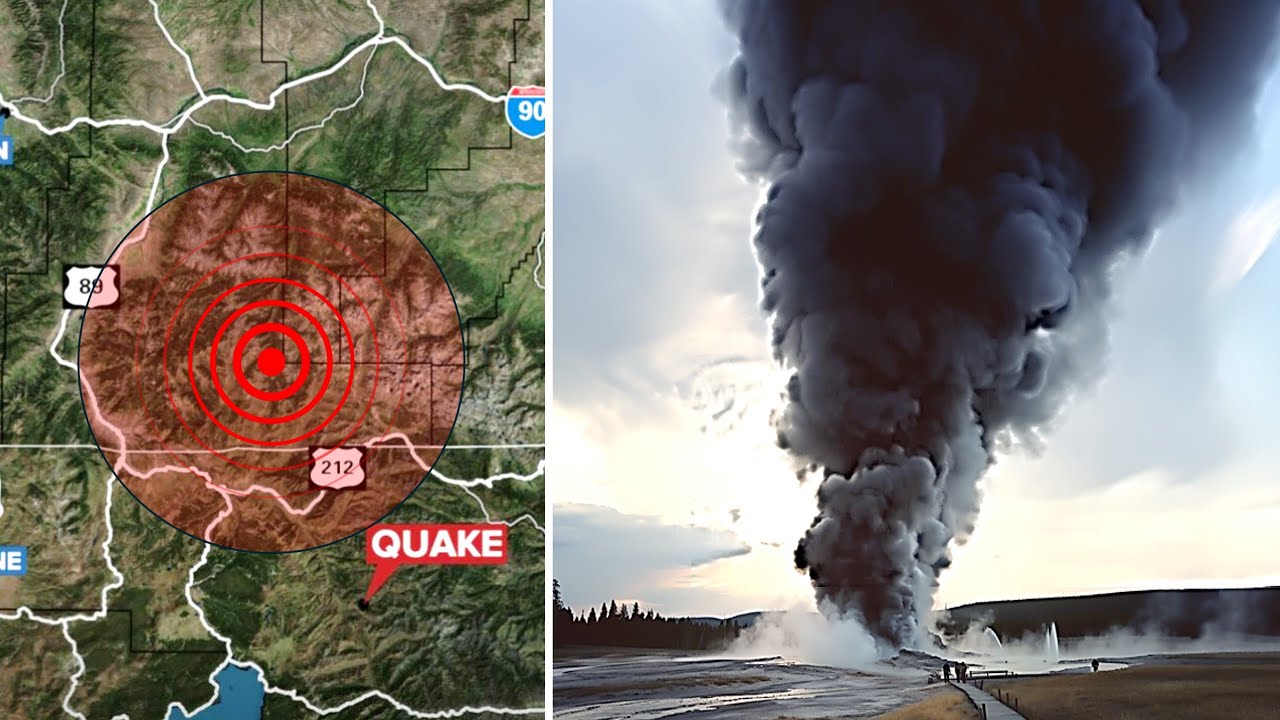**Headline: Yellowstone’s Volcano Awakens: Scientists Detect Rising Magma Plume, Raising Alarm Bells**

In a startling revelation that has sent shockwaves through the scientific community, researchers have detected a massive 465-mile-long plume of molten rock rising beneath Yellowstone National Park, a site already infamous for its volatile geological history. This discovery heightens concerns over the supervolcano’s potential for explosive activity, prompting experts to closely monitor one of the most closely scrutinized volcanic systems on the planet.
The announcement comes on the heels of intensive research efforts led by geologists who have been tracking subtle yet significant changes in the region. Dr. Robert Christensen, a prominent geologist, shared insights during a recent documentary, revealing that the Yellowstone magma chamber is not just stable but is gradually rising each year. This slow ascent, while seemingly innocuous, carries the potential for catastrophic consequences if the plume continues to liquefy and ascend more rapidly.

The Yellowstone supervolcano, which sits atop a vast caldera measuring approximately 45 miles across, has a history of dramatic eruptions, with the last major event occurring around 640,000 years ago. The implications of a rising magma body have sparked renewed interest not only in Yellowstone but also in volcanic systems worldwide. As the Earth experiences an uptick in seismic activity and volcanic eruptions globally, scientists are left pondering whether these events are part of a natural cycle or indicative of more profound geological shifts.
Initial observations by Dr. Bob Smith from the University of Utah revealed alarming signs of deformation in the caldera, including changes in water levels across Yellowstone Lake. This tilt in the lake’s basin suggested that the land itself is moving, a clear indicator of the geological unrest brewing beneath the surface. Motivated by these findings, researchers secured funding for detailed surveys that ultimately confirmed the caldera’s uplift over the past 50 years—approximately two-thirds of a meter, a significant figure that suggests ongoing subsurface activity.

While the notion of an imminent eruption remains speculative, the evidence of rising magma combined with surface uplift raises critical questions about the stability of the supervolcano. Scientists emphasize that while geological processes unfold over extensive time scales, the recent findings indicate that Yellowstone is an active and evolving system, one that could potentially become a focal point for geological change.
The urgency of this situation is underscored by the increasing frequency of volcanic activity worldwide. In 2018 alone, scientists recorded over 14,000 earthquakes globally, with clusters of seismic activity near known tectonic boundaries and volcanic hotspots. As researchers analyze these trends, they are left to grapple with the pressing question: Are we on the brink of a new phase of tectonic activity that could reshape our planet?

Despite the alarming nature of these discoveries, experts caution against panic. While the likelihood of a super eruption remains low in any given year, the consequences of such an event would be catastrophic, with the potential to disrupt climate patterns, devastate agriculture, and displace entire populations. For this reason, Yellowstone remains one of the most monitored volcanic systems in the world, employing advanced satellite imaging and ground-based monitoring stations to track even the slightest changes beneath the surface.
As the magma plume beneath Yellowstone continues its slow ascent, it serves as both a geological curiosity and a stark warning of the powerful processes that have shaped our planet for billions of years. Understanding these processes is not just a scientific endeavor; it is a responsibility that demands vigilance and preparedness. As we stand on the precipice of potential geological upheaval, the commitment to monitoring and research has never been stronger, reminding us that the Earth is a dynamic system in constant flux.
With each new finding, the puzzle of Yellowstone becomes more intricate, offering humanity a clearer view of the forces that govern the world beneath our feet. As scientists work tirelessly to unravel the mysteries of this supervolcano, one thing remains clear: the eyes of the world are fixed on Yellowstone, and the stakes have never been higher.

